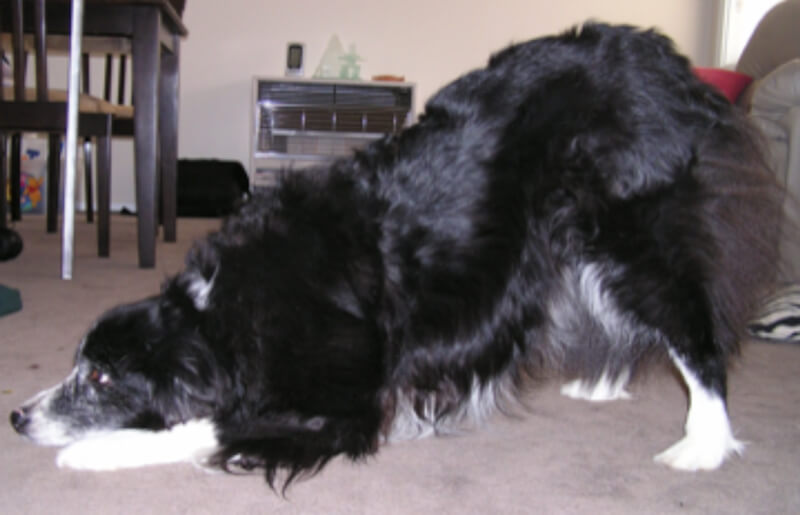This section should discuss the diagnosis and/or differential diagnosis that the veterinarian makes.
An overview of the diagnosis should be included, which includes the disease process, clinical signs, cause, diagnostics and treatments.
Examples:
Patients who present with abdominal pain could have any number of disease processes going on and further workup and examination is necessary for the vet to develop a list of differential diagnoses (these are possible diagnoses that match the clinical signs and findings) and then to determine the final diagnosis.
This patient presented with abdominal pain that was not only a clinical finding from the vet performing a palpation of the abdominal region during the initial physical exam, but could be observed by fact the patient was in the ‘prayer’ position.
Differential diagnoses the vet established were pancreatitis, foreign body, neoplasia and gastroenteritis. A series of blood tests (discussed below) were performed. These blood test results, when considered in association with each other and the patient’s status and history, were interpreted by the Veterinarian as acute pancreatitis. The onset of symptoms (over 72 hours), the inappetence, nausea, abdominal pain, and test results all supported pancreatitis as the most likely diagnosis.
Pancreatitis is a common disease seen in dogs that can be life threatening. The pancreas is responsible for producing digestive enzymes into the small intestine that help to digest fats, carbohydrates and proteins.
Patients who present with abdominal pain could have any number of disease processes going on and further workup and examination is necessary for the vet to develop a list of differential diagnoses (these are possible diagnoses that match the clinical signs and findings) and then to determine the final diagnosis.
This patient presented with abdominal pain that was not only a clinical finding from the vet performing a palpation of the abdominal region during the initial physical exam, but could be observed by fact the patient was in the ‘prayer’ position. The image below shows a dog adopting a typical ‘prayer position’, with lowered head and forequarters and elevated rump.

Figure 1: Mack Demonstrating the Prayer Position
This positioning can be classical in dogs that are suffering from pancreatitis, but can be present in any form of abdominal pain, however usually is a reflection of cranial abdominal pain.
Differential diagnoses the vet established were pancreatitis, foreign body, neoplasia and gastroenteritis. A series of blood tests (discussed below) were performed. These blood test results, when considered in association with each other and the patient’s status and history, were interpreted by the Veterinarian as acute pancreatitis. The onset of symptoms (over 72 hours), the inappetence, nausea, abdominal pain, and test results all supported pancreatitis as the most likely diagnosis.
Pancreatitis is a common disease seen in dogs that can have mild symptoms such as in Rocky’s case, or be life threatening. The pancreas is an organ that lies in close proximity to the duodenum and is responsible for the production of glucogen and insulin in response to glucose. When food enters the stomach the pancreas secretes digestive enzymes into the small intestine that help to digest fats, carbohydrates and proteins.
